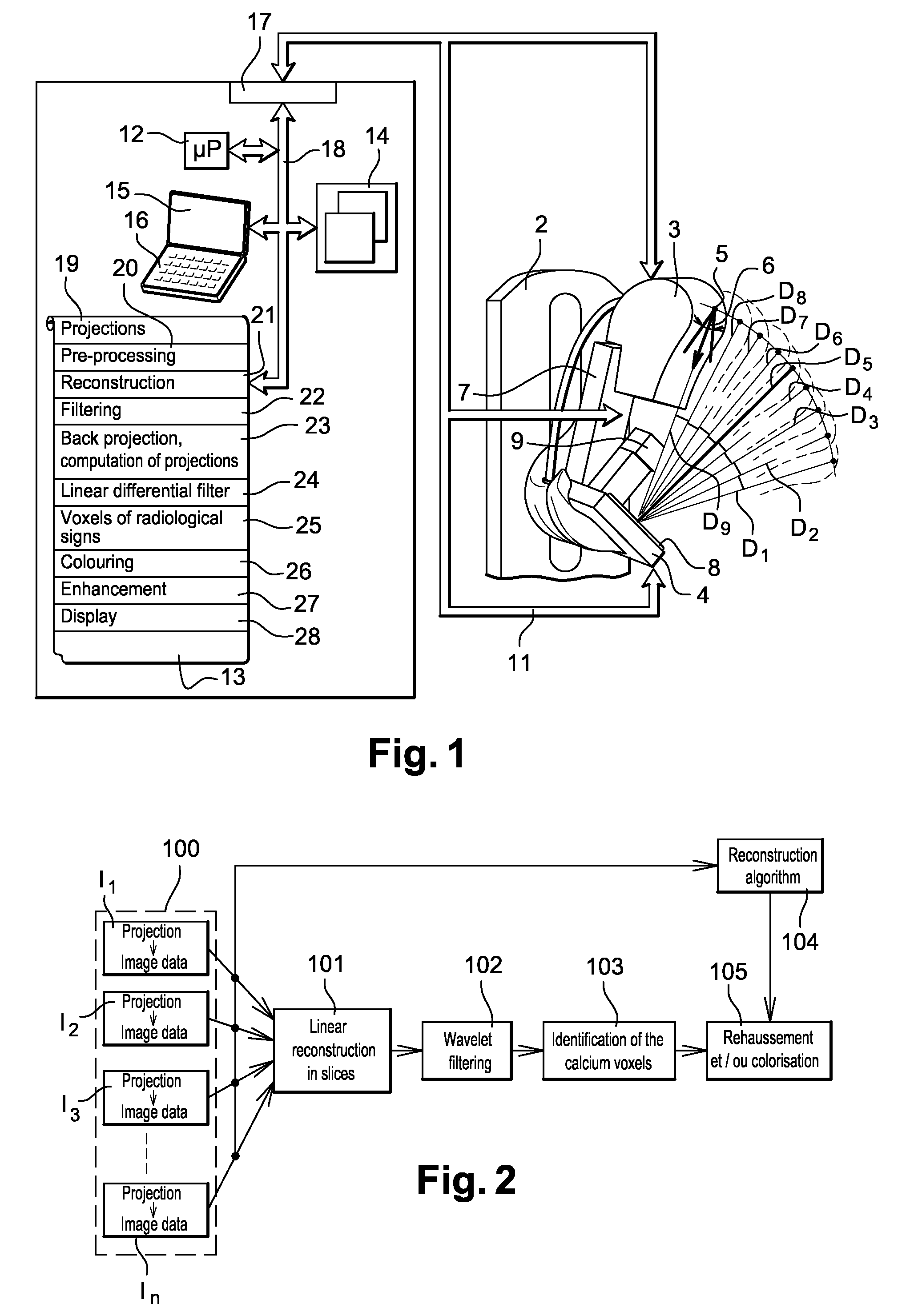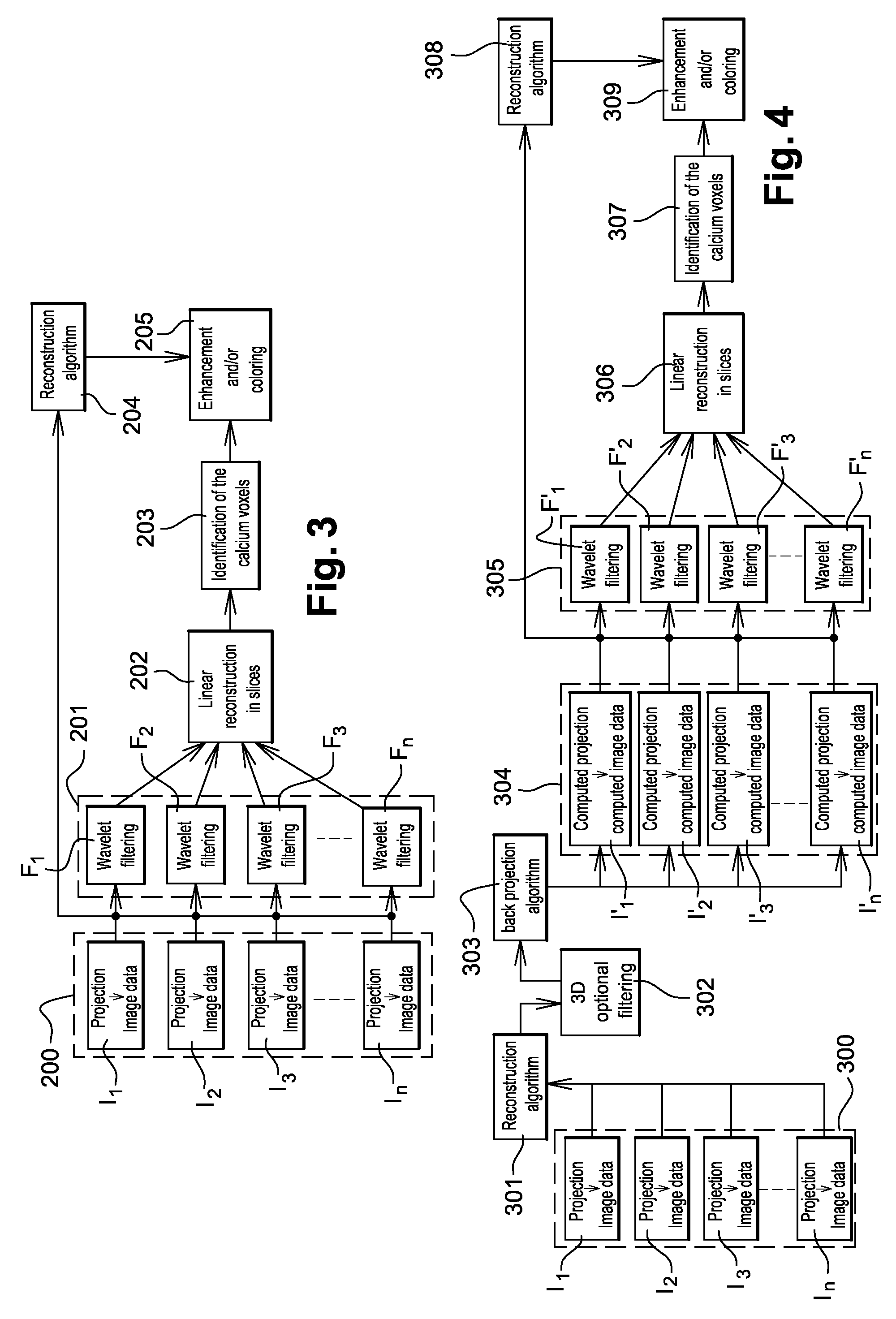Method for the processing of radiological images in tomosynthesis for a detection of radiological signs
- Summary
- Abstract
- Description
- Claims
- Application Information
AI Technical Summary
Benefits of technology
Problems solved by technology
Method used
Image
Examples
first embodiment
[0043]FIG. 2 shows the invention. In FIG. 2, the X-ray tube 3, in the step 100, emits x-ray intensities going through the patient's breast for a multiplicity of projections P1 to Pn, in a pre-determined path. The detector 4 acquires the pieces of x-ray image data I1 to In respectively representing the projection images P1 to Pn. The control logic unit processes the pieces of x-ray image data I1 to In.
[0044]At the step 101, the control logic unit applies a simple back-projection reconstruction algorithm. This algorithm is used to rebuild the volume in different slice planes parallel to the detector. The term used here is tomosynthesis of the breast. All the pieces of image data I1 to In are used during this tomosynthesis reconstruction to provide a digital volume of the breast. This tomosynthesis technique enables the reconstruction of the 3D volume of the breast being studied from a small number of 2D projections or pieces of image data, distributed on a restricted angular domain an...
second embodiment
[0086]The invention has thus implemented a second embodiment comprising a faster algorithm that depends only on the number of projections and not on the number of slices in assuming a parallel geometry, as illustrated in FIG. 3.
[0087]FIG. 3 shows another illustration of means implementing the method according to an embodiment of the invention. In the implementation of the invention, the image-processing method is applied to each piece of image data I1 to In, respectively representing each projection P1 to Pn obtained at the step 200. These pieces of image data are given directly by the digital detector to the control logic unit. It is on the basis of these pieces of image data that the processing method enables the location of elements likely to form radiological signs. These radiological signs may be microcalcifications or opacities.
[0088]At the step 201, the control logic unit respectively applies a binary mask F1 to Fn to each piece of image data I1 to In in order to separate the...
PUM
 Login to View More
Login to View More Abstract
Description
Claims
Application Information
 Login to View More
Login to View More - R&D
- Intellectual Property
- Life Sciences
- Materials
- Tech Scout
- Unparalleled Data Quality
- Higher Quality Content
- 60% Fewer Hallucinations
Browse by: Latest US Patents, China's latest patents, Technical Efficacy Thesaurus, Application Domain, Technology Topic, Popular Technical Reports.
© 2025 PatSnap. All rights reserved.Legal|Privacy policy|Modern Slavery Act Transparency Statement|Sitemap|About US| Contact US: help@patsnap.com



